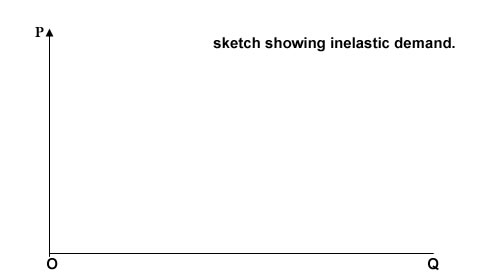The question was not a popular one as it was attempted by very few candidates. The very few that attempted it managed to score average marks because in their graphs, they forgot the origin and most especially the regular calibration of the units on each axis. Furthermore, majority of the candidates failed to give satisfactory answer to (a) (iii) on which (b) (i) and (b) (iii) depended. All these shortcomings reduced the overall performance of the candidates in the question to below average.
In order to score good marks in this question, candidates were expected to present their answers as follows:
(a) (i) Percentage change in Price of x
= Price of x in September – Price of x in August x 100
Price of x in August 1
= 28 – 20 x 100
20 1
= 4 x 100
10
= 40%
- Percentage change in quantity purchased
= Qty purchased in September – Qty purchased in August x 100
Qty purchased in August 1
= 64 – 80 x 100
80
= -16 x 100
- 1
= 20% (ignore the negative sign)
- Co-efficient of price elasticity of demand
= Percentage change in Qty demanded
Percentage change in price
= 20%
40%
= O.5
(b) From the answer
(i) Demand is price inelastic.
- This is because the percentage change in quantity demanded
is less than the percentage change in price which makes the coefficient of price elasticity of demand less than one




